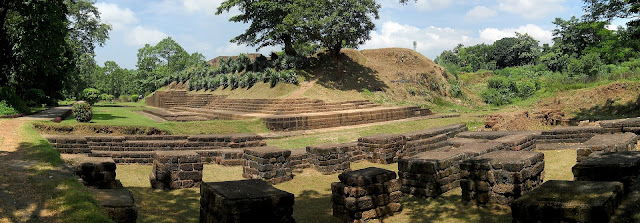Founded in 1531 by the Bundela Chieftain, Rudra Pratap Singh, Orchha, which literary translates into ‘hidden place’, is one of Madhya Pradesh’s greatest treasures. This historic small town on the Betwa River boasts its assembly of magnificent monuments in the form of beautiful palaces, temples and royal chhatris (cenotaphs) built along the banks of the Betwa river in the memory of Bundela Kings.
History of Orchha Kingdom
Orchha kingdom was ruled by the Bundela Rajputs. In 1531, Rudra Pratap Singh was succeeded by his son, Bharatichand, who died without leaving an heir in 1554 and was in turn succeeded by his younger brother, Madhukar Shah who considerably extended the limits of his kingdom.
During their reigns Bharatichand and Madhukar Shah (reigned 1554 A.D. – 1591 AD ) had to contend Afghan ruler and Sher Shah’s son Islam Shah Suri (r. 1545–53) and the Mughal emperor Akbar. Madhukar Shah was the patron of Hindi poet Keshavdas.
After Madhukar Shah’s death, his eldest son, Ram Chand, was appointed ruler of Orchha by Mughal emperor Akbar. This was resented by Madhukar Shah’s another son Vir Singh Bundela who continued to defy Akbar till latter’s death in 1605.
Vir Singh Bundela
Vir Singh Bundela was commissioned by Jahangir to murder the court historian Abul Fazal (1551–1602) , author of Akbarnama. the official history of Akbar’s reign. Abul Fazal who had opposed Jahangir’s accession to the throne was executed by Vir Singh Bundela (Bir Singh Bundela).
Vir Singh Bundela was also the patron of Keshavdas who is known for composing a eulogy of the former titled Virsinghdev Charit in 1607.
After his death in 1627, Vir Singh Deo was succeeded by his son Jhujhar Singh who rebelled against Shah Jahan who had ascended the Mughal throne in 1628. Jhujhar Singh and his son were killed by the Mughal forces which was led by crown prince Aurangzeb. All the treasure and several royal Bundela ladies fell into the hands of the Mughals who also demolished the massive Orchha temple built by Vir Singh Bundela and a mosque was built on the site. One of Jhujhar Singh’s sons and a grandson were converted to Islam.
As a patron of art and architecture
Vir Singh Bundela was a prolific builder. He built temples not only in Orchha, but also constructed the Forts of Datia and Jhansi, and temples in Mathura and Varanasi. In Mathura he had built the Keshav Rai temple which was demolished by Aurangzeb who built the Shahi Eidgah in its place. A blend of Bundela and Mughal architecture, Jahangir Mahal at Orchha was built by him to welcome Emperor Jahangir during the latter’s visit to the Bundela capital.
%20and%20Chennakeshava%20(far)%20temples%20at%20Mosale.JPG)


.jpg)






,%20c.%201814-1815.jpg)






